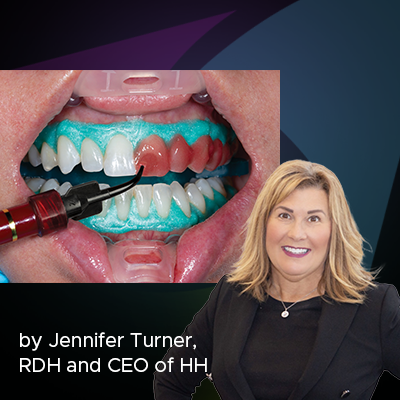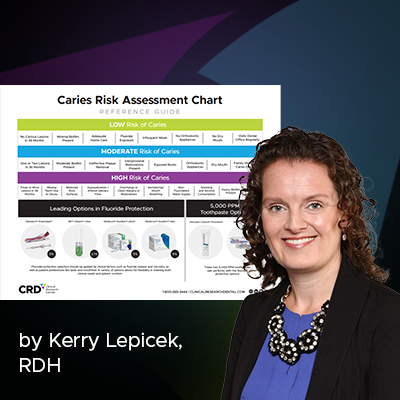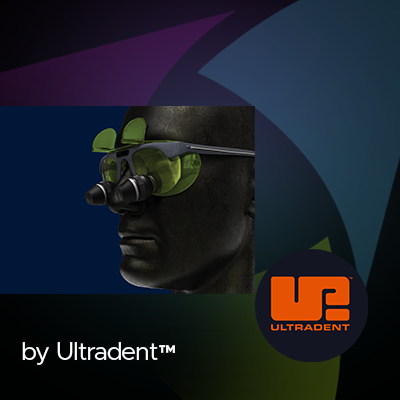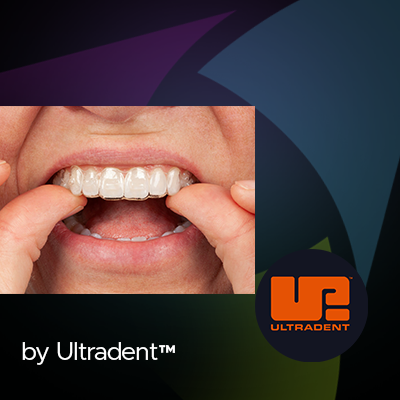
Brighten While You Straighten - Teeth Straightening Meets Teeth Whitening
Having a mouth full of misaligned, yellowed teeth can be an intense, even traumatizing experience. Folks may spend years ashamed of their smiles before they get to experience the metamorphic powers of a smile transformation. Opalescence™ PF whitening for aligners (Opalescence PF 10% in Canada) is made for people who want to not only straighten their teeth at home but whiten their teeth at home at the same time.
Longtime dental assistant and prolific lecturer Shannon Pace-Brinker has assisted countless patients through their clear aligner journeys. She’s also created hundreds of CE courses featuring clear aligners. She says Opalescence PF whitening will help legions of patients get the smile they desire. “Now you’re giving patients the best of both worlds. Not only are you straightening their teeth, but you’re making them whiter—which go together.”
“There are a lot of perks. Patients don’t have to take the teeth whitening tray in and out, because the solution allows for long-term use and minimizes concerns of sensitive teeth. Doctors don’t have to fabricate new trays because the patient can use the clear aligner they were going to be wearing anyway. It also helps motivate the patient to keep their aligner in their mouth—promoting compliance,” Pace-Brinker says, adding that the teeth whitening gel also keeps teeth hydrated. “You’re
covering the teeth, so you have some water in that teeth whitening gel, which is another perk. That’s like a surprise, or a gift, to the patient.”
Compliance is a huge factor in patient success with clear aligners. With traditional brackets and wires, movement will be achieved because the patient can’t remove them. With clear aligners, a patient can simply take them out. “We don’t want to give patients any reason to take clear aligners out,” Pace-Brinker says.
Patients who have sensitive teeth while whitening their teeth with clear aligners could be a reason for a patient to fall out of compliance. With this in mind, Opalescence PF whitening comes in a mild 10% carbamide peroxide concentration. Patients can comfortably wear the aligner with the teeth whitening gel throughout the day or night, for (up to) 8-10 hours/day throughout the duration of the whitening treatment process. Mitigating tooth sensitivity issues minimizes reasons for a patient to remove their clear aligner, which keeps them in compliance and maximizes potential for movement of the teeth. “The compliance factor is higher when using Opalescence PF vs. not because if you’re giving them a brighter smile, they’re going to wear the tray more; because they can easily see that result,” Pace-Brinker says.
Pace-Brinker coaches dental practices on teeth whitening while straightening with clear aligners. She says many practices don’t realize that they don’t need to fabricate additional trays for the teeth whitening gel. Opalescence PF works with the clear aligners the patients would be wearing anyway. There’s also no special cleaning needed for the aligner after the teeth whitening gel has been used.
Did you know your patients with clear aligners can whiten with Opalescence™ PF?
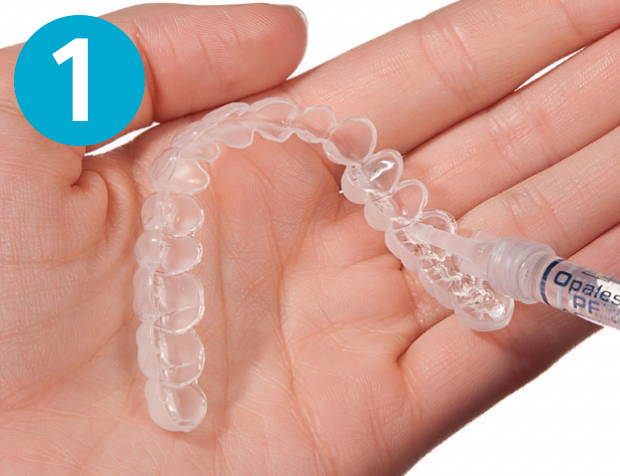
Express one continuous line of gel along the lower half of the cheek side of each aligner tray. Use 1/4 to 1/3 of syringe per arch.
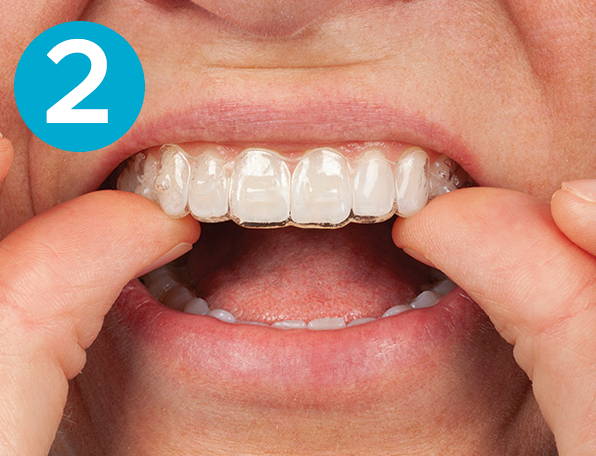
Lightly tap tray to adapt sides to teeth. Ensure that the trays are fully seated and completely engaged onto the aligner attachments.
Wear Opalescence 10% gel for 8-10 hours overnight.

Remove excess gel with a soft toothbrush. Do not swallow rinsed gel.
Clean tray with a soft brush and water after use.
Subscribe to our emails to receive articles like this and be notified about our exclusive promotions.
Featured Products
Discover More
This article was originally published in the Clinical Life™ magazine: Winter 2025 edition

